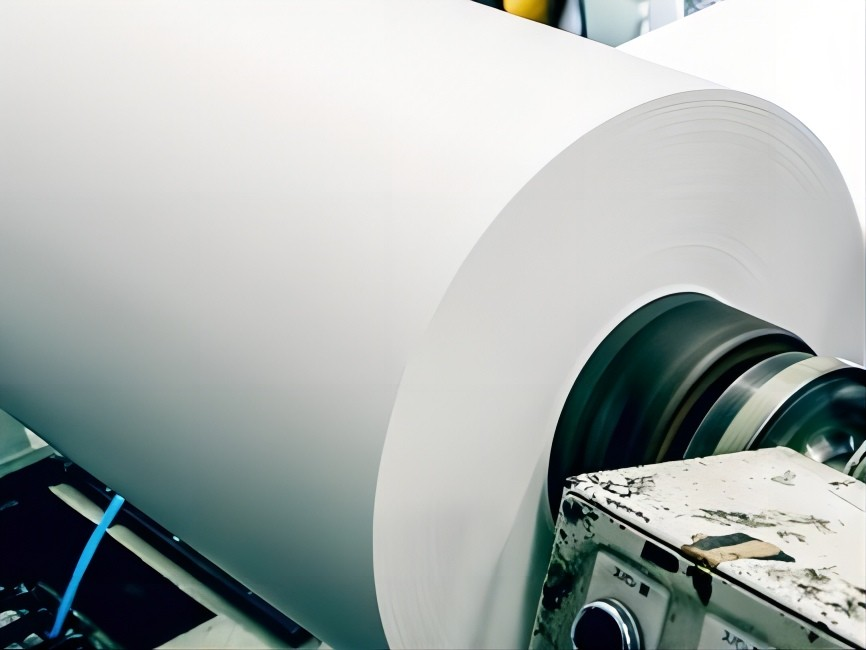The electrolyte as the negative electrode needs to be loaded, and at the same time, it is also necessary to add a physical barrier between the positive and negative foil to prevent the collision between the positive and negative foil .
When the electrolytic capacitor flows through the current, it will produce ampere force between the positive and negative foils, which will cause a mechanical collision between the positive foil and the negative foil, which may damage the alumina film and cause the electrolytic capacitor to fail.
In order to avoid the rigid collision between the positive foil and the negative foil, a flexible buffer substance, that is, electrolytic capacitor paper, needs to be added between the positive foil and the negative foil.

The difference between electrolytic capacitor paper and paper capacitor paper is that the paper dicapacitor paper satisfies the wax or impregnated capacitor oil, and does not destroy the insulation performance of the capacitor oil, and does not want to have permeability.
The electrolytic capacitor paper needs to have good chemical properties, not to cause changes in the composition of the electrolyte, and not to allow the presence of harmful substances such as chloride ions. At the same time, the electrolytic capacitor paper needs to have good electrolyte-absorbing characteristics to ensure that the electrolytic capacitor contains enough electrolyte.
The electrolytic capacitor paper also needs to have good electrolyte permeability to reduce the resistance of ions in the electrolyte when the electrolytic capacitor is working.
The withstand voltage requirements of high-voltage electrolytic capacitor paper are much higher than those of low-voltage electrolytic capacitor paper, and the current flowing through is relatively small, and the requirements for ESR do not need to be as low as that of low-voltage electrolytic capacitors, so the high-voltage electrolytic capacitor paper is dense and thick compared with low-voltage electrolytic capacitor paper, which makes the ESR of high-voltage electrolytic capacitors per unit area of aluminum foil higher than that of low-voltage electrolytic capacitors.
Low-voltage electrolytic capacitors need to have the lowest possible ESR, and the electrolytic capacitor paper needs to have better electrolyte permeability than the high-voltage electrolytic capacitor paper, so that the ionic movement of the electrolytic capacitor is less hindered when working. Therefore, low-voltage electrolytic capacitor paper is thinner and sparser than high-voltage electrolytic capacitor paper.
Ultimately, the electrolytic capacitor needs to be impregnated as the electrolyte as the true negative electrode, and the electrolyte as the negative electrode determines the performance of the electrolytic capacitor.

The alumina dielectric layer of aluminum electrolytic capacitors will be destroyed due to the micro-battery effect of aluminum foil purity and electrolyte, so the electrolyte needs to have the ability to repair the alumina dielectric layer to ensure that the leakage current of aluminum electrolytic capacitors is not excessive.
At present, the application scenarios of aluminum electrolytic capacitors are power electronic circuits and power supply bypass of relatively high ripple current circuits, which require electrolytic capacitors to have the lowest possible ESR, such as switching power supplies, LED, inverter arc welding power supplies, induction heating, charging piles and on-board chargers, and high ripple current power supply bypass, most of which need to filter out high-frequency ripple currents well.
So aluminum electrolytic capacitors are required to have excellent high-frequency and low-resistance characteristics, which can be achieved by selecting electrolyte.
For the power frequency and power frequency doubling aluminum foil, it is necessary to improve the characteristics of the positive foil to obtain, the positive foil has different hole specifications, there will be different low-frequency ESR characteristics, and the low resistance characteristics can also be obtained by increasing the aluminum foil area, which needs to pay the cost and volume price.
